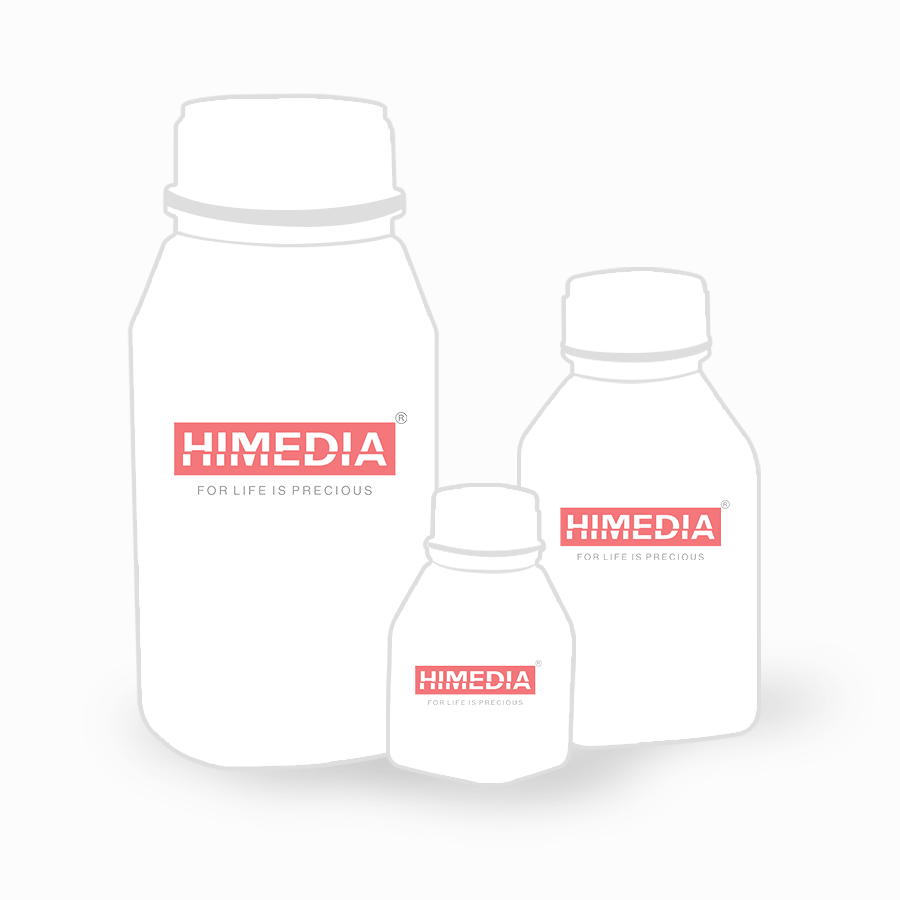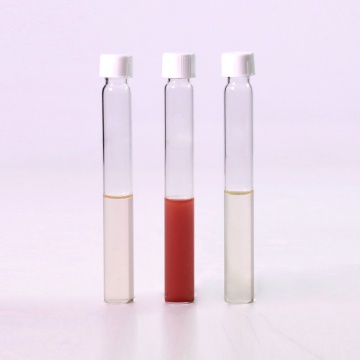 Your enquiry has been submitted
Your enquiry has been submitted
Selenite Broth (Selenite F Broth) (Twin Pack)
MPN Presumptive#CC293D
Intended Use:
Recommended as enrichment media for the isolation of Salmonellae from faeces, urine or other pathological materials.
Composition**
| Ingredients | g/L |
|---|---|
| Part A | |
| Tryptone | 5.000 |
| Lactose | 4.000 |
| Sodium phosphate | 10.000 |
| Part B | |
| Sodium hydrogen selenite | 4.000 |
Final pH (at 25°C): 7.0±0.2
**Formula adjusted, standardized to suit performance parameters
Directions
Suspend 4.0 grams of Part B in 1000 ml distilled water. Add 19.0 grams of Part A. Mix well. Warm to dissolve the medium completely. Distribute in sterile test tubes. Sterilize in a boiling water bath or free flowing steam for 10 minutes. DO NOT AUTOCLAVE. Excessive heating is detrimental. Discard the prepared medium if large amount of selenite is reduced (indicated by red precipitate at the bottom of tube/bottle).
Note: Recommended to adjust the pH if slight drift is occurring after addition of selenite.
Principle And Interpretation
Klett (1) first demonstrated the selective inhibitory effects of selenite and Guth (2) used it to isolate Salmonella Typhi. Leifson fully investigated selenite and formulated the media (3). Enrichment media are routinely employed for detection of pathogens in faecal specimens as the pathogens are present in a very small number in the intestinal flora. Selenite Broth is useful for detecting Salmonella in the non-acute stages of illness when organisms occur in the faeces in low numbers and for epidemiological studies to enhance the detection of low number of organisms from asymptomatic or convalescent patients (4).
Tryptone provides nitrogenous substances. Lactose maintains the pH of medium. Selenite is reduced by bacterial growth and alkali is produced. An increase in pH lessens the toxicity of the selenite and results in overgrowth of other bacteria. The acid produced by bacteria due to lactose fermentation serves to maintain a neutral pH. Sodium phosphate maintains a stable pH and also lessens the toxicity of selenite. Enriched broth is subcultured on differential plating media such as Bismuth Sulphite Agar (M027), Brilliant Green Agar (M016), XLD Agar (M031) etc. Do not incubate the broth longer than 24 hours as inhibitory effect of selenite decreases after 6 - 12 hours of incubation (5).
Type of specimen
Clinical samples: faeces, urine or other pathological materials.
Specimen Collection and Handling
For clinical samples follow appropriate techniques for handling specimens as per established guidelines (6,7).
After use, contaminated materials must be sterilized by autoclaving before discarding.
Warning and Precautions
In Vitro diagnostic use only. For professional use only. Read the label before opening the container. Wear protective gloves/protective clothing/ eye protection/face protection. Follow good microbiological lab practices while handling specimens and culture. Standard precautions as per established guidelines should be followed while handling clinical specimens. Safety guidelines may be referred in individual safety data sheets.
Limitations
- Selenite Broth is inhibitory and recommended for selective isolation of Salmonella species.
- Do not incubate the broth longer than 24 hours as inhibitory effect of selenite decreases after 6 - 12 hours of incubation (6)
Performance and Evaluation
Performance of the medium is expected when used as per the direction on the label within the expiry period when stored at recommended temperature.
Quality Control
Appearance
Part A: White to light yellow homogeneous free flowing powder
Part B: White to cream crystalline powder
Colour and Clarity of prepared medium
Cream to yellow coloured clear solution without any precipitate
Reaction
Reaction of medium [(1.9% w/v) Part A and (0.4% w/v) Part B] at 25°C. pH: 7.0±0.2
pH
6.80-7.20
Cultural Response
Cultural characteristics observed when subcultured on MacConkey Agar(M081) after an incubation at 35-37°C for 18-24hours.
| Organism | Inoculum (CFU) | Recovery | Colour of colony |
|---|---|---|---|
| Escherichia coli ATCC 8739 (00012*) | 50-100 | none to poor (no increase in precipitate numbers) | pink with bile |
| Salmonella Typhimurium ATCC 14028 (00031*) | 50-100 | good-luxuriant | colourless |
| Escherichia coli ATCC 25922 (00013*) | 50-100 | none to poor (no increase in precipitate numbers) | pink with bile |
| Salmonella Typhi ATCC 6539 | 50-100 | good-luxuriant | colourless |
| Salmonella Choleraesuis ATCC 12011 | 50-100 | good-luxuriant | colourless |
Key: (*) Corresponding WDCM numbers.
Storage and Shelf Life
Store between 10-30°C in a tightly closed container and the prepared medium at 2-8°C. Use before expiry date on the label. On opening, product should be properly stored dry, after tightly capping the bottle in order to prevent lump formation due to the hygroscopic nature of the product. Improper storage of the product may lead to lump formation. Store in dry ventilated area protected from extremes of temperature and sources of ignition Seal the container tightly after use. Product performance is best if used within stated expiry period.
Disposal
User must ensure safe disposal by autoclaving and/or incineration of used or unusable preparations of this product. Follow established laboratory procedures in disposing of infectious materials and material that comes into contact with clinical sample must be decontaminated and disposed of in accordance with current laboratory techniques (6,7).
Reference
- Klett A., 1900, Zeitsch Für Hyg. Und. Infekt., 33: 137.
- Guth F., 1926, Zbl. Bakt. I. Orig., 77:487.
- Leifson E., 1936, Am. J. Hyg., 24(2): 423.
- Chattopadhyay W. and Pilford J. N., 1976, Med. Lab. Sci., 33:191
- Kelly, Brenner and Farmer, 2003, Manual of Clinical Microbiology, 8th ed., Lennett and others (Eds.), ASM, Washington, D.C.
- Isenberg, H.D. Clinical Microbiology Procedures Handbook 2nd Edition.
- Jorgensen, J.H., Pfaller, M.A., Carroll, K.C., Funke, G., Landry, M.L., Richter, S.S and Warnock., D.W. (2015) Manual of Clinical Microbiology, 11th Edition. Vol. 1.
| Product Name | Selenite Broth (Selenite F Broth) (Twin Pack) |
|---|---|
| SKU | M052 |
| Product Type | Regular |
| Physical Form | Powder |
| Origin | Animal |
| Packaging type | HDPE |
| References | 1. Klett A., 1900, Zeitsch Für Hyg. Und. Infekt., 33: 137. 2.Guth F., 1926, Zbl. Bakt. I. Orig., 77:487. 3.Leifson E., 1936, Am. J. Hyg., 24(2) : 423. 4.Kelly, Brenner and Farmer, 2003, Manual of Clinical Microbiology, 8th ed., ,,Lennett and others (Eds.), ASM, Washington,D.C. 5.Chattopadhyay W. and Pilford J. N., 1976, Med. Lab. Sci., 33:191. |
| Customized Product Available | No |








